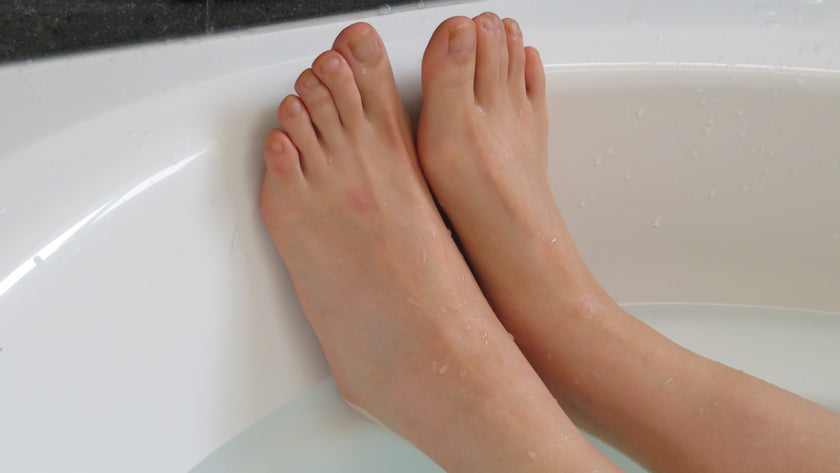
The differences between athletes foot and nail fungal and how to treat them
Athlete's foot and nail fungus are two common fungal infections that affect the feet. While they share some similarities, they are not the same condition. In this blog, we'll explore the differences between athlete's foot and nail fungus and what you can do to treat and prevent them.
What is Athlete's Foot?
Athlete's foot, also known as tinea pedis, is a fungal infection that affects the skin on the feet. It is caused by the same fungi that cause ringworm and jock itch. Athlete's foot typically affects the spaces between the toes, but it can also spread to the soles of the feet and other areas of the body.
Symptoms of Athlete's Foot
The symptoms of athlete's foot can vary, but they typically include:
- Redness and scaling on the affected area
- Itching and burning
- Blisters that ooze or crust over
- Dry, cracked skin on the soles of the feet
Treatment for Athlete's Foot
Athlete's foot can be treated with Athlete's Foot Solution. With the key ingredients: aloe vera and almond oil, you'll see results within 3-5 days. In addition to the treatment, it's important to keep your feet clean and dry to prevent the fungus from spreading.

Preventing Athlete's Foot
To prevent athlete's foot, you should:
- Keep your feet clean and dry, you can do this with our Foot Deo Spray
- Wear shoes and socks made of breathable materials
- Change your socks and shoes regularly
- Avoid walking barefoot in public areas like locker rooms and swimming pools
What is Nail Fungus?
Nail fungus, also known as onychomycosis, is a fungal infection that affects the nails. It can affect the toenails or fingernails and is more common in the toenails. Nail fungus can cause the nails to become thick, discolored, and brittle.
Symptoms of Nail Fungus
The symptoms of nail fungus can vary, but they typically include:
- Thickened nails
- Discolored nails that may be white, yellow, or brown
- Brittle, crumbly, or ragged nails
- Distorted nail shape
- Foul odor coming from the infected nail

Treatment for Nail Fungus
Nail fungus can be more difficult to treat than athlete's foot, and it often more patience. If you follow the simple steps of our Nail Mycosis Solution you'll see results within 3 weeks. This means applying the product twice a day consistently, in the morning and in the evening, after you have thoroughly washed and dried your feet. And filing the top surface of the nail 2-3 times per week. This makes the nail slightly thinner which makes it easier for the product to penetrate the nail and reach the nail bed, where the fungus originates.
Preventing Nail Fungus
To prevent nail fungus, you should:
- Keep your feet clean and dry
- Wear shoes and socks made of breathable materials
- Change your socks and shoes regularly
- Trim your nails straight across and keep them short
- Avoid walking barefoot in public areas like locker rooms and swimming pools
Differences between Athlete's Foot and Nail Fungus
While athlete's foot and nail fungus are both fungal infections that affect the feet, there are some key differences between the two conditions. Athlete's foot affects the skin on the feet and is typically characterized by redness, scaling, and itching. Nail fungus affects the nails and can cause the nails to become thick, discolored, and brittle.
Additionally, athlete's foot is typically easier to treat than nail fungus. Athlete's foot can often be treated with within a few days, while nail fungus typically takes way longer and is more stubborn. If you suspect that you have athlete's foot or nail fungus, it's important to see a healthcare professional for proper diagnosis and treatment.











